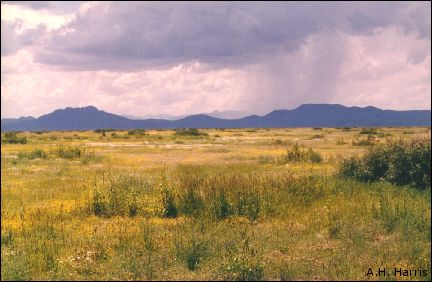

First, the wind and dust. Then a crack of thunder and, finally, the downpour, the first rain of summer filling the air with the very essence of the Chihuahuan Desert rainy season. The smell of wet sand and rock mixes with that of Creosotebush, while other, less aggressive plants release more subtle perfumes.
A coyote fills its lungs, unable to absorb enough of the desert coming alive. Beneath its feet, seeds long dormant greedily drink of the stuff of life, reviving after their year's sleep. Spadefoot toads, buried in the sand, awaken to the drumming of rain and the first stirrings of the mating season. Kangaroo rats become alert, perhaps aware that soon new green shoots will stir their hormones, too.
Rivulets, carrying their burden of sediment, merge with their brethren to rage along deepening arroyos, perhaps to make it to the sea, perhaps in time to merely dissipate into thin air.
The rain ends, and the silence is broken only by the occasional quiet
chirp of a bird. The cycle of desert life has begun again.

Contributor: Arthur H. Harris, Laboratory for Environmental Biology, Centennial Museum, University of Texas at El Paso.
Desert Diary is a joint production of the Centennial Museum and KTEP National Public Radio at the University of Texas at El Paso.

Rain falling on the edge of Playas Valley in the bootheel of New Mexico. View to the west. Photograph by A.H. Harris.